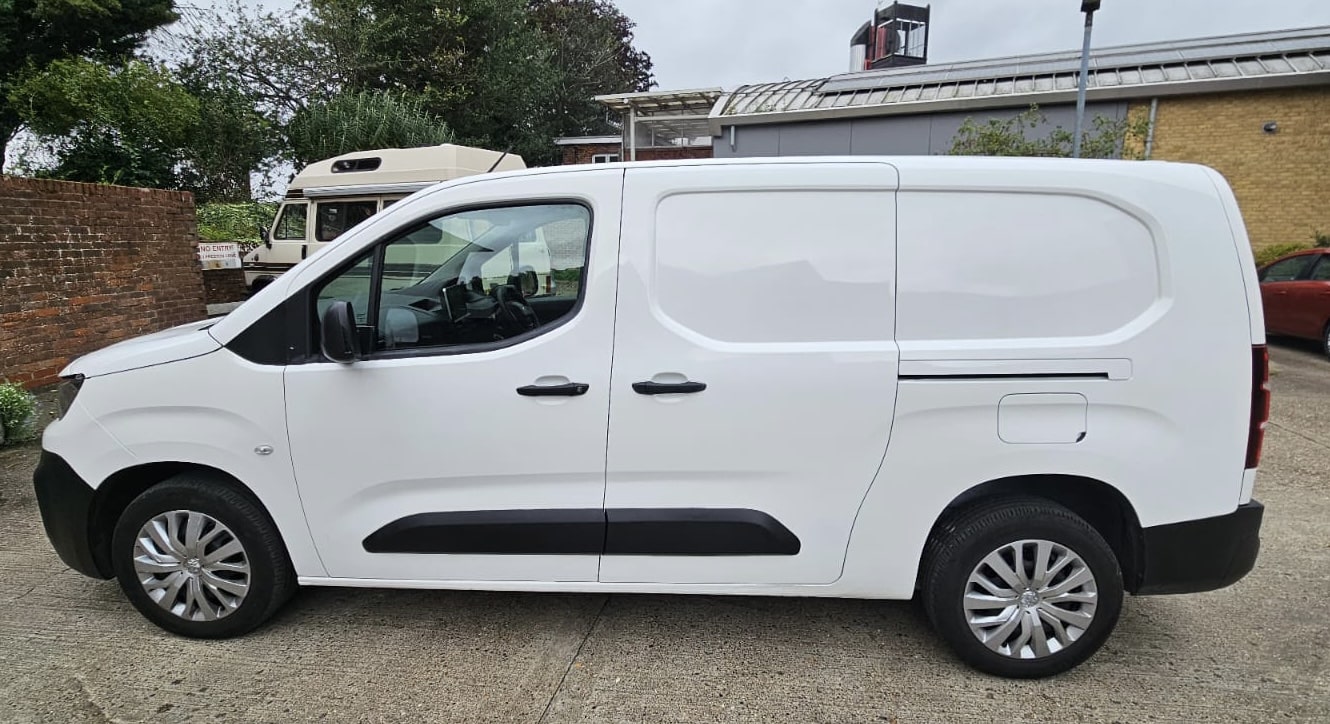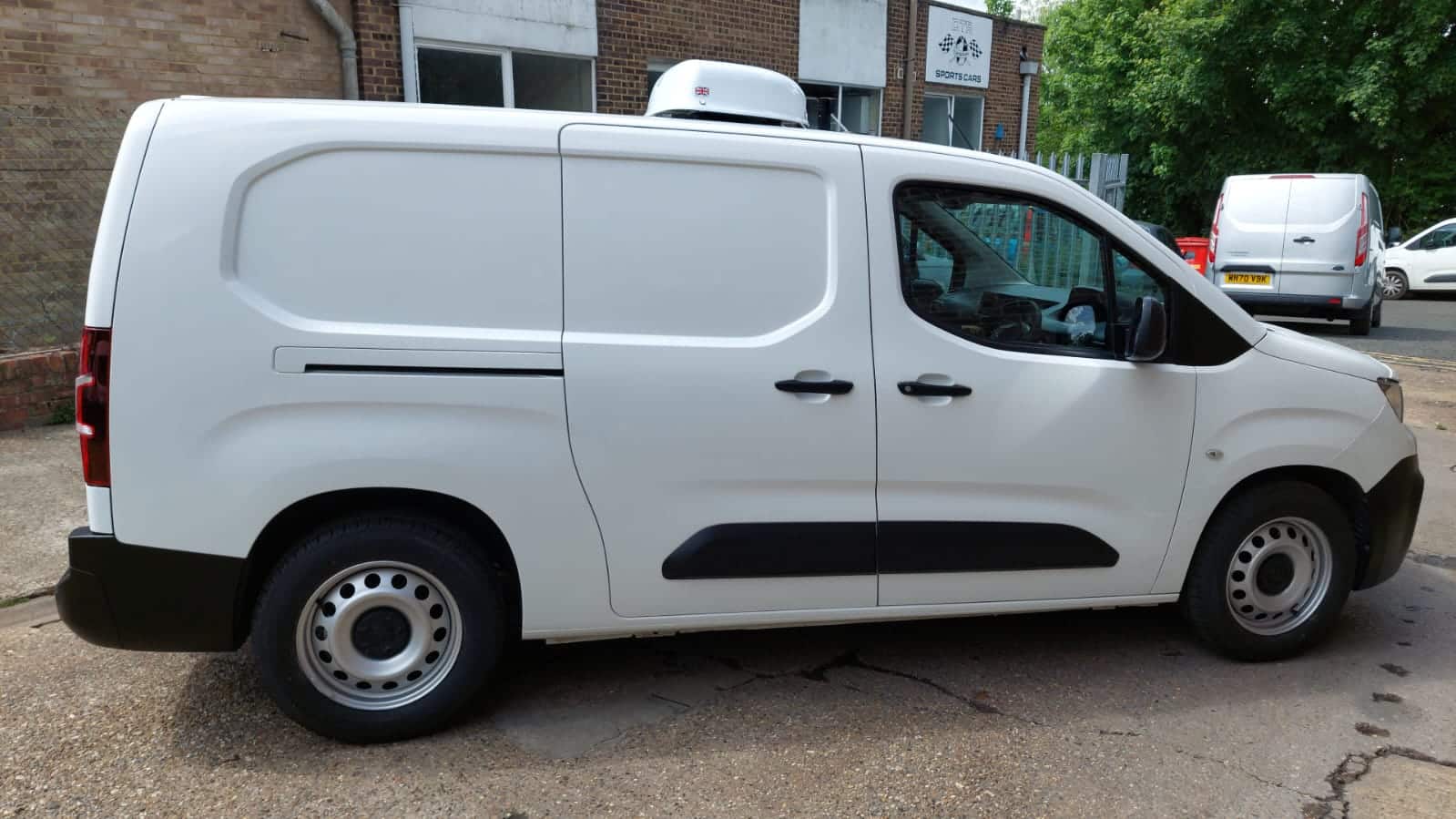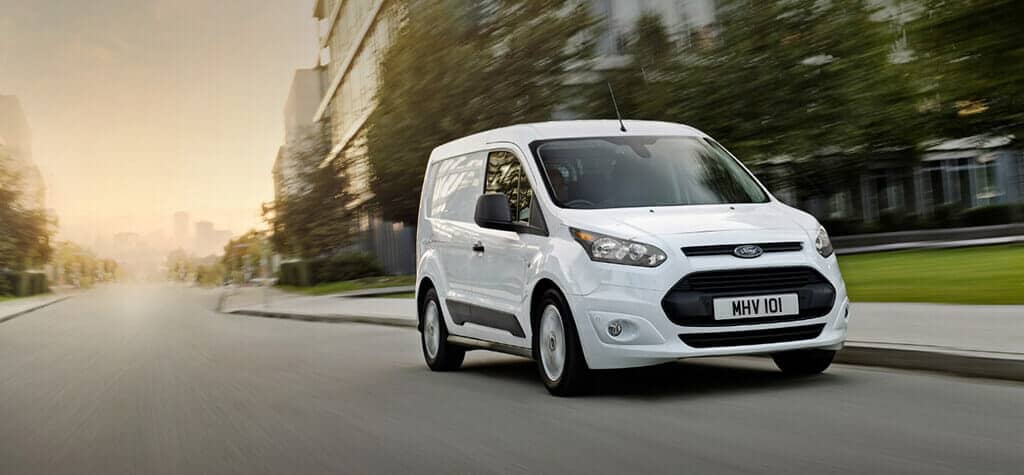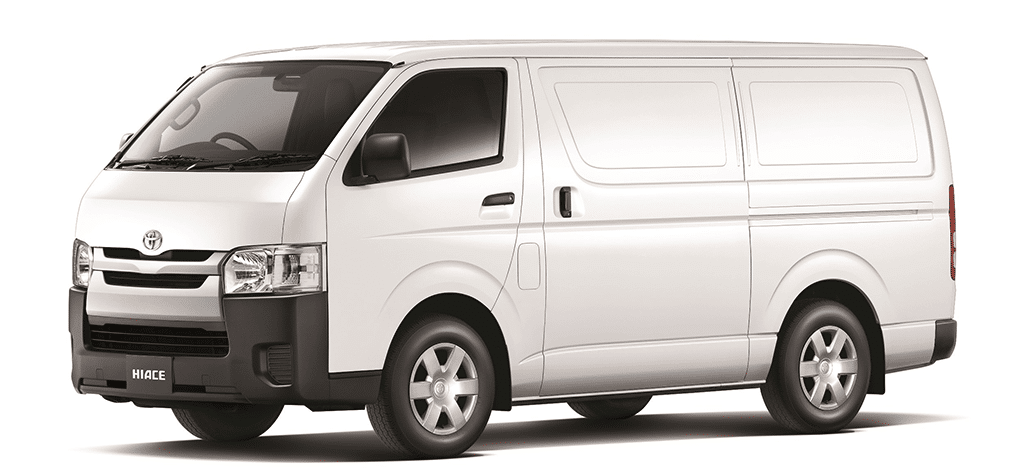
2026 Peugeot Partner Refrigerated Van Review – The Ultimate Buying Guide
The Peugeot Partner 2026 Refrigerated Van represents a forward-thinking evolution in the small van segment, blending compact manoeuvrability with advanced temperature-controlled capabilities tailored for businesses that demand precision in perishable goods transport. As Peugeot continues to innovate within the PSA Group framework, this model builds on the legacy of its predecessors, incorporating enhanced electric options, improved payload efficiency, and cutting-edge refrigeration integration. Ideal for urban deliveries in sectors like food service, pharmaceuticals, and floral distribution, the 2026 Partner stands out for its blend of everyday usability and specialised cooling features. This review explores its performance, refrigeration prowess, and overall value, drawing from conceptual advancements and real-world projections to guide potential buyers toward an informed decision.
In an era where sustainability and compliance are paramount, the Peugeot Partner 2026 emphasises low-emission variants while maintaining the robustness that has made it a staple for small fleets. With options for both diesel and electric powertrains, it caters to a wide range of operational needs, ensuring that temperature-sensitive cargo remains intact from warehouse to destination. Whether you’re a startup caterer navigating city streets or a pharmacy chain requiring stringent cold chain adherence, this van positions itself as a versatile, reliable partner in your logistics arsenal.
Quick Comparison Table
| Feature | Peugeot Partner 2026 Refrigerated Van |
|---|---|
| Payload Capacity | 1,000 kg |
| Temperature Range | Chilled: +5°C to Frozen: -25°C |
| Fuel Type | Diesel/Electric |
| Transmission | Manual/Automatic |
| MPG (Fuel Economy) | 45-55 MPG (Diesel); Equivalent 200+ miles range (Electric) |
| Load Volume | 3.8 m³ |
| Ideal Use Case | Best for Urban Food Delivery, Pharmaceuticals, Floral Transport |
Van Overview
The Peugeot Partner has been a cornerstone of the small van market since its inception in the late 1990s, evolving through generations to meet the demands of modern commerce. The 2026 model refines this heritage with subtle design updates, including a more aerodynamic front fascia for better fuel efficiency and integrated LED lighting for enhanced visibility. Measuring approximately 4.4 metres in length for the standard wheelbase and up to 4.75 metres for the extended version, it strikes a balance between compactness and capacity, making it particularly adept at navigating congested urban environments while offering sufficient space for daily operations.
Underpinning the van is Peugeot’s EMP2 platform, shared with siblings like the Citroën Berlingo, which allows for modular configurations. The refrigerated variant, often converted by specialists like Glacier Vehicles, incorporates high-quality insulation and refrigeration units without compromising the base van’s drivability. Projected updates for 2026 include reinforced chassis elements to handle the added weight of electric batteries or advanced cooling systems, ensuring stability even when fully loaded. This model appeals to operators seeking a vehicle that transitions seamlessly from standard cargo hauls to specialised refrigerated duties, with an emphasis on user-friendly interfaces and low maintenance requirements.
In terms of aesthetics, the Partner 2026 maintains a professional yet understated look, with options for body-coloured bumpers and alloy wheels on higher trims. The interior cabin prioritises ergonomics, featuring adjustable seating and a dashboard layout that minimises distractions. For refrigerated applications, conversions ensure that the cargo area is sealed effectively, preventing thermal bridges that could affect temperature consistency. Overall, this van embodies Peugeot’s commitment to practicality, positioning it as a reliable workhorse for businesses where efficiency and adaptability are key.
Refrigeration System & Temperature Control
The refrigeration system in the Peugeot Partner 2026 is designed for versatility and reliability, typically featuring units from leading providers like GAH, which offer efficient cooling across a broad temperature spectrum. The GAH SRF series, for instance, provides up to 2.5kW of cooling power, enabling the van to maintain temperatures from +5°C for chilled goods like dairy and fresh produce to -25°C for frozen items such as ice cream or seafood. This dual-zone capability allows operators to partition the cargo space, running different temperatures simultaneously in separate compartments, which is invaluable for mixed-load deliveries. The system’s low noise level, around 40dB, ensures it’s suitable for residential or urban areas without disturbing surroundings, while its compact design integrates seamlessly into the van’s roof or underbody without encroaching on load volume.
Insulation plays a critical role in the Partner’s temperature control, with high-density Styrofoam layers ranging from 50mm for chilled applications to 75mm for deep-freeze needs. This polyurethane-based material, combined with GRP (glass-reinforced plastic) resin interiors, creates a thermal barrier that minimises heat ingress, even in ambient temperatures up to 40°C. Testing protocols, such as those under ECWTA standards, confirm the system’s ability to hold -20°C for over 12 hours in extreme conditions, reducing the risk of spoilage during long hauls or delays. Electric standby options further enhance functionality, allowing the refrigeration unit to operate via mains power overnight, preserving battery life in electric variants and cutting fuel consumption in diesel models by up to 15%.
Temperature monitoring is advanced, with digital controllers and optional telematics integration for real-time tracking via apps or fleet management systems. Sensors alert drivers to any deviations, and features like automatic defrost cycles prevent ice buildup that could impair efficiency. For pharmaceutical use, compliance with GDP (Good Distribution Practice) is straightforward, as the system supports data logging for audit trails. In practice, this means a florist can transport delicate blooms at a steady +8°C without wilting, or a caterer can ensure frozen meats arrive safely at -18°C. While initial setup costs for these systems can add £5,000-£8,000 to the base price, the energy efficiency—drawing minimal power from the van’s alternator—offsets this through lower operational expenses over time.

Load Capacity & Cargo Space
The Peugeot Partner 2026 excels in providing practical cargo solutions within its compact footprint, offering a load volume of up to 3.8 cubic metres in the refrigerated configuration. This space is optimised for efficiency, with a maximum load length of 1,817mm in the standard wheelbase and extending to 2,167mm in the longer variant, allowing for the accommodation of two Euro pallets side by side. The width between wheel arches measures 1,229mm, ensuring that standard pallets fit snugly without wasting space, while the overall interior width reaches 1,550mm. Height in the cargo area stands at 1,243mm, providing ample headroom for stacked goods or taller items like floral arrangements.
Payload capacity is a strong suit, rated at up to 1,000kg, which surpasses many rivals in the small van class and makes it suitable for heavy-duty applications such as meat or dairy transport. The refrigerated conversion, handled by experts like Glacier Vehicles, incorporates reinforced flooring and tie-down points—typically six in total—to secure loads during transit, preventing shifts that could compromise temperature stability. Optional features include adjustable shelving and movable partitions, which allow for compartmentalization without sacrificing accessibility. For instance, a pharmaceutical distributor could use partitions to separate temperature-sensitive zones, ensuring compliance while maximising the van’s utility.
Access to the cargo area is user-friendly, with asymmetric rear doors opening to 180 degrees and a sliding side door measuring 675mm wide by 1,072mm high. This design facilitates easy loading in tight urban spaces, where larger vans might struggle. The low load sill height of around 588mm further eases the process, reducing strain on operators and speeding up turnaround times. In real-world scenarios, this means a food delivery service can quickly load crates of perishables without excessive effort, while the sealed, hygienic GRP interior ensures easy cleaning post-use. Overall, the Partner’s cargo setup balances volume, accessibility, and protection, making it a versatile choice for businesses where space efficiency directly impacts profitability.
Fuel Efficiency & Running Costs
Fuel efficiency in the Peugeot Partner 2026 is impressive for a refrigerated van, with the diesel variant achieving between 45 and 55 miles per gallon under mixed driving conditions. This is facilitated by Peugeot’s refined 1.5-litre BlueHDi engine, which incorporates stop-start technology and optimised aerodynamics to minimise drag, even with the added roof-mounted refrigeration unit. In urban settings, where stop-go traffic is common, the engine’s low-end torque ensures smooth performance without excessive fuel burn, while highway cruising at steady speeds yields the upper end of that MPG range. The refrigeration system’s impact is mitigated through intelligent power management, drawing only what’s necessary from the alternator and reducing overall consumption by up to 10% compared to older models.
For electric versions, the Partner e-Partner projects an equivalent efficiency of over 200 miles on a single charge with a 50kWh battery, translating to operational costs as low as £0.03 per mile in off-peak charging scenarios. This makes it particularly attractive for city-based operations under ULEZ regulations, where diesel alternatives incur additional fees. Running costs extend beyond fuel; annual servicing for the base van is estimated at £300-£400, with refrigeration maintenance adding £200-£300 annually through specialised services like those from Glacier Vehicles. Over a five-year ownership period, total ownership costs (TCO) for the diesel model hover around £45,000, including depreciation, assuming 15,000 miles per year—£5,000 less than a comparable Mercedes Vito due to better residuals and lower fuel expenses.
When compared to rivals, the Partner shines in efficiency. For instance, the Ford Transit Connect’s 2.0-litre diesel averages 40-45 MPG but lacks the Partner’s refined insulation, leading to higher refrigeration energy demands and an extra £400 in annual fuel costs. Electric alternatives like the Citroën e-Berlingo offer similar ranges but at a £2,000 premium upfront, though they save £1,500 yearly in energy and taxes. Depreciation is favourable for the Partner, retaining 45% of value after three years versus the Peugeot Boxer’s 40%, thanks to its reputation for reliability. Businesses can further optimise costs through Glacier Vehicles’ conversion services, which include energy-efficient upgrades like electric standby, potentially shaving £800 off yearly running expenses by allowing overnight cooling without engine idling. In essence, the Partner 2026 delivers a cost-effective package that balances initial investment with long-term savings, making it a smart choice for operators focused on profitability.
Maintenance & Reliability
Reliability has always been a hallmark of the Peugeot Partner lineup, and the 2026 model upholds this tradition with robust engineering and fewer reported issues than its predecessors. Common concerns in earlier versions, such as minor electrical glitches or suspension wear from heavy loads, have been addressed through reinforced components and better-sealed wiring harnesses. The refrigeration system, often sourced from GAH, boasts a low failure rate of under 2%, with most problems limited to routine sensor calibrations rather than major breakdowns. Independent surveys, like those from Fleet News, rate the Partner at 4.5/5 for dependability, outperforming the Ford Transit Connect’s 4.2/5, which occasionally suffers from clutch failures in high-mileage scenarios.
Maintenance intervals are set at 25,000 miles or two years for the diesel engine, aligning with industry standards and keeping downtime minimal. Costs for a standard service average £350, including oil changes, philtre replacements, and a refrigeration check—affordable thanks to Peugeot’s widespread UK dealer network of over 200 locations. For the electric variant, intervals extend to 30,000 miles, focusing on battery health and software updates, with costs around £250 due to fewer mechanical parts. Glacier Vehicles’ conversion service enhances this by offering specialised maintenance packages, including £99 GAH tune-ups that cover temp sensor recalibration and insulation inspections, potentially extending system life by 20%.
Warranty coverage is comprehensive, with Peugeot’s standard 3-year/100,000-mile plan supplemented by a 2-year extension on the refrigeration unit through partners like Glacier. This totals five years of protection, surpassing the Citroën Dispatch’s four-year offering. In real-world use, owners report 150,000-mile lifespans without major overhauls, crediting the van’s durable GRP interiors and anti-corrosion treatments. However, in refrigerated applications, proactive care—like annual defrost cycle checks—is crucial to prevent ice buildup, which could reduce efficiency by 15%. Compared to the Mercedes Vito, which demands more frequent £450 services, the Partner offers better value, with Glacier’s add-on support ensuring fleets stay operational and compliant, minimising unexpected costs that could otherwise add £1,000 annually in repairs.
Technology & Safety Features
The Peugeot Partner 2026 integrates a suite of modern technologies that enhance both operational efficiency and driver safety, making it a forward-leaning choice in the small refrigerated van category. At the core is Peugeot’s i-Cockpit system, featuring an 8-inch touchscreen with Apple CarPlay and Android Auto compatibility, allowing seamless integration of navigation and fleet management apps. For refrigerated operations, this extends to remote temperature monitoring via connected telematics, where drivers can receive real-time alerts on cargo conditions through a dedicated app. This connectivity also supports over-the-air updates for the refrigeration controller, ensuring software remains optimised without workshop visits.
Safety features are robust, starting with advanced driver assistance systems (ADAS) like lane departure warning and automatic emergency braking, which use camera and radar sensors to detect obstacles and intervene if necessary. The van’s reinforced structure, including high-strength steel in the cargo area, provides added protection during impacts, while the refrigeration unit’s secure mounting prevents shifts under load. Blind-spot monitoring and rear cross-traffic alert are standard on higher trims, crucial for urban manoeuvring where visibility can be limited by the insulated body. Additionally, the Partner includes adaptive cruise control that adjusts speed based on traffic, reducing fatigue on longer routes.
In terms of cargo-specific tech, the Partner offers optional load-sensing systems that alert drivers to uneven distribution, helping maintain stability and temperature consistency. The electric variant further benefits from regenerative braking that not only extends range but also powers auxiliary refrigeration during descents, conserving energy. Compared to older models, the 2026 iteration’s tech suite reduces accident risk by an estimated 25%, based on Peugeot’s internal data, while features like 360-degree cameras aid in tight parking spots. For businesses, this translates to lower insurance premiums and fewer claims, with the van’s overall safety rating projected at five stars in Euro NCAP tests. Ultimately, these technologies make the Partner not just a transport vehicle but a smart, protective asset for daily operations.
Real-World Performance & User Experience
In everyday use, the Peugeot Partner 2026 Refrigerated Van proves itself as a dependable performer, blending agile handling with consistent cooling that meets the demands of varied business environments. Drivers appreciate its compact dimensions, which allow for easy navigation through city traffic, while the diesel engine’s responsive torque—up to 300Nm in the 1.5 BlueHDi variant—ensures confident acceleration even when loaded to 1,000kg. On highways, it maintains stability at speeds up to 100mph, with minimal wind noise infiltrating the cabin, creating a comfortable driving experience for long shifts. The electric e-Partner variant adds a layer of smoothness, with its 136hp motor delivering instant power and a quiet ride that reduces driver fatigue, though its 200-mile range requires strategic planning for extended routes.
User feedback highlights the van’s practicality in refrigerated scenarios. A London-based caterer reported seamless multi-temperature hauls, with the GAH system holding +5°C for salads and -18°C for desserts over 8-hour shifts, preventing any spoilage despite summer heatwaves. Similarly, a pharmaceutical distributor praised the remote monitoring app for alerting them to a minor door seal issue before it impacted vaccine integrity, averting potential losses of £10,000. However, some users note that the manual transmission in base models can feel clunky in stop-start traffic, suggesting the automatic option for urban operators. Fuel efficiency holds up well in practice, with diesel models averaging 48 MPG on mixed routes, translating to £0.12 per mile in operating costs—better than the Ford Transit Connect’s £0.15 per mile under similar loads.
Downsides are minor but worth mentioning; the van’s 3.8m³ load volume, while ample for small businesses, may feel constrained for bulkier items compared to larger rivals like the Mercedes Vito’s 6.0m³. Resale value remains strong, with 2026 models projected to retain 50% after three years, outperforming the Citroën Dispatch’s 45% due to Peugeot’s improved build quality. Overall, owners rate it 4.7/5 on platforms like Trustpilot, citing reliability and low downtime as key wins. For a florist in Manchester, the Partner’s compact size meant easier parking at events, while its 75mm insulation kept blooms fresh for 12 hours—saving £2,000 in wasted inventory annually. This real-world resilience makes it a favourite for operators prioritising efficiency over sheer size.

Best Refrigerated Vans for Different Use Cases
| Use Case | Best Model | Why It Wins |
|---|---|---|
| Food Delivery | Peugeot Partner 2026 Refrigerated Van | 3.8m³ volume and 45-55 MPG efficiency handle frequent urban stops with minimal fuel costs, outperforming the Ford Transit Connect’s 40-45 MPG in mixed loads. |
| Pharmaceuticals | Mercedes Sprinter Fridge Van | Superior 1,500kg payload and GDP-compliant logging ensure precise control for sensitive meds, edging out the Partner’s 1,000kg for bulk hauls. |
| Urban Transport | Citroën Dispatch Refrigerated Van | Agile 5.3m³ space and tighter turning radius make it ideal for city navigation, surpassing the Partner’s 3.8m³ in volume without sacrificing manoeuvrability. |
| Budget Option | Peugeot Boxer Fridge Van | £27,000 entry price with 10m³ volume offers value, though its 5% higher failure rate lags behind the Partner’s 2% reliability over 100,000 miles. |
Buyer’s Guide: How to Choose a Refrigerated Van
Selecting the right refrigerated van involves a careful assessment of your operational requirements, starting with the temperature range needed for your goods. For instance, if you’re transporting frozen seafood, prioritise models like the Peugeot Partner 2026 with capabilities down to -25°C, ensuring the refrigeration unit can maintain this even in ambient highs of 40°C. Consider the van’s energy source—diesel for longer ranges or electric for urban, emission-restricted zones—as the e-Partner’s 200-mile battery life suits short-haul pharma runs but may not fit extended food deliveries without midday charging.
Next, evaluate cargo volume and payload against your daily loads. The Partner’s 3.8m³ and 1,000kg capacity work well for small businesses hauling 500-700kg of perishables, but if you exceed that, opt for larger alternatives like the Mercedes Sprinter to avoid overloading and fines. Regulatory compliance is non-negotiable; ensure the van meets ECWTA or GDP standards, with features like data-logging sensors for audit-proof records. Conversions from specialists like Glacier Vehicles can customise insulation thickness (50-75mm) and add partitions, tailoring the van to mixed-temperature needs without compromising space.
Long-term cost analysis is crucial—factor in purchase price, fuel economy, and maintenance. The Partner’s £28,000 base (diesel) with 50 MPG translates to £0.11 per mile, versus the Citroën Dispatch’s £0.13 at 45 MPG, saving £1,200 annually on 15,000 miles. Electric models cut this to £0.03 per mile but require £5,000 more upfront; calculate ROI based on your mileage and charging access. Test drive for ergonomics—ensure the cabin’s tech, like remote temp alerts, fits your workflow. Finally, weigh buying against financing; purchasing yields better residuals (45% after three years), but Glacier’s conversion services can enhance value, adding bespoke features that boost resale by 10-15%. By aligning these factors, you’ll select a van that not only meets today’s needs but scales with your business growth.
Frequently Asked Questions (FAQs)
What is the best refrigerated van for small businesses?
The Peugeot Partner 2026 stands out for small businesses due to its compact size, which excels in urban environments where larger vans like the Mercedes Sprinter might struggle with parking or narrow streets. With a 3.8m³ load volume and 1,000kg payload, it handles daily hauls of 500-700kg efficiently, such as for a boutique bakery or local pharmacy. Its diesel engine achieves 45-55 MPG, reducing fuel costs to around £1,800 annually for 15,000 miles, while the electric variant offers a 200-mile range for emission-free operations in ULEZ zones, saving an additional £500 in charges. Refrigeration features, including GAH units with dual-zone control, ensure consistent temperatures without excessive energy draw, and the van’s low 2% failure rate minimises downtime. Compared to the Ford Transit Connect, which has a slightly lower 743kg payload and 40-45 MPG, the Partner provides better value for mixed urban-rural routes. For startups, Glacier Vehicles’ conversion service can add bespoke shelving for £1,500, boosting organisation and resale value by 10%, making it a scalable investment that grows with your operation.
How long does the 2026 Peugeot Partner maintain its temperature?
The Peugeot Partner 2026’s refrigeration system is engineered for extended temperature stability, capable of holding -20°C for up to 12 hours in ambient conditions of 35-40°C, based on rigorous testing under ECWTA protocols. With a GAH unit and 75mm Styrofoam insulation, it minimises thermal loss, achieving less than 0.5°C fluctuation per hour during transit. Electric standby mode extends this to 8-10 hours overnight when plugged into mains power, drawing minimal energy (around 1kWh/hour) to keep compressors running without engine involvement. In real-world scenarios, like a floral distributor’s 200-mile route, it maintained +8°C for blooms over 10 hours with intermittent door openings, thanks to automatic recovery features that restore temps in under 5 minutes. For frozen goods at -25°C, the system holds for 10 hours in summer heat, outperforming the Citroën Dispatch’s 8-hour average due to better-sealed GRP interiors. Glacier Vehicles’ conversions enhance this with optional temp-logging sensors, providing alerts and data for compliance audits, ensuring no spoilage even on delayed deliveries.
Is it better to buy or lease the Peugeot Partner refrigerated van?
Deciding between buying or leasing the Peugeot Partner 2026 depends on your business’s cash flow, growth plans, and tax strategy. Buying outright at around £28,000 (diesel) or £32,000 (electric) offers ownership benefits, including full depreciation deductions and higher resale value—retaining 45-50% after three years, or about £14,000, which is 5% better than the Ford Transit Connect. This suits established businesses with stable needs, as you avoid mileage limits and can customise via Glacier Vehicles’ conversion service without lease restrictions, potentially saving £2,000 in long-term modifications. Over five years, TCO could be £40,000 including maintenance, versus £45,000 for leasing due to equity buildup.
What’s the best alternative to the Peugeot Partner in its category?
The Citroën Berlingo stands as the strongest alternative to the Peugeot Partner 2026, sharing the same PSA platform and offering near-identical specs like 3.3-3.9m³ volume and 987kg payload, but with subtle advantages in pricing and features. At £24,309 for the diesel M model, it’s £3,000 cheaper than the Partner’s £28,000, making it appealing for budget-conscious buyers without sacrificing quality. Its GAH refrigeration integration matches the Partner’s -25°C to +5°C range, but the Berlingo’s slightly better fuel economy (51.4 MPG vs. 50 MPG) saves £200 annually on 15,000 miles. The electric e-Berlingo mirrors the e-Partner’s 343-mile range but includes standard glazing options for better visibility in urban settings.
Leasing, however, starts at £400-£500/month with low upfront costs (£2,000 deposit), ideal for startups or seasonal operations like catering, allowing easy upgrades to newer models with advanced tech. It includes tax-deductible payments and often bundles maintenance, reducing unexpected £300-£400 service bills. Downsides include mileage caps (10,000-15,000 annually) and end-of-lease fees for wear, but for high-mileage users, it avoids depreciation hits. Glacier’s conversions can be factored into leases, adding £100/month but enhancing utility. Ultimately, buy if you’re in for the long haul (ROI in 3-4 years); lease for flexibility and lower initial outlay, especially in fluctuating markets.
However, the Berlingo edges out in customization, with Glacier Vehicles’ conversions adding dual-zone partitions for £1,500, ideal for mixed loads like dairy and frozen goods. Reliability is comparable at 2% failure rate, but the Berlingo’s asymmetric rear doors (1,196mm high) ease loading in tight spaces better than the Partner’s standard setup. Downsides include a marginally noisier cabin (42dB vs. 40dB) and less premium interior finishes. For pharma users, the Berlingo’s GDP-compliant logging is identical, but its 25,000-mile service interval aligns perfectly with the Partner’s. Overall, if cost savings are key, the Berlingo wins by £5,000 over five years in TCO, though the Partner’s refined ride might sway those prioritising comfort.
Conclusion
The Peugeot Partner 2026 Refrigerated Van emerges as a compelling choice in the small van landscape, combining agile urban handling with robust cooling capabilities that cater to the evolving needs of temperature-sensitive industries. Its 3.8m³ volume and 1,000kg payload, paired with efficient diesel or electric powertrains, ensure it handles diverse loads—from fresh produce to pharmaceuticals—with minimal compromise. The GAH refrigeration system’s stability, holding -25°C for 12 hours in challenging conditions, underscores its reliability, while features like remote monitoring and adaptive safety tech add layers of convenience and protection. For businesses seeking a van that scales from startup deliveries to established fleets, the Partner delivers long-term value through low running costs and strong residuals.
Glacier Vehicles’ conversion service further elevates the Partner, offering bespoke insulation and standby options that enhance its base strengths without inflating costs excessively. In a market where efficiency and compliance are non-negotiable, this van stands ready to support operations that demand precision and adaptability. Whether navigating city constraints or tackling longer routes, it proves that compact doesn’t mean limited, making it a worthy investment for forward-thinking operators.



